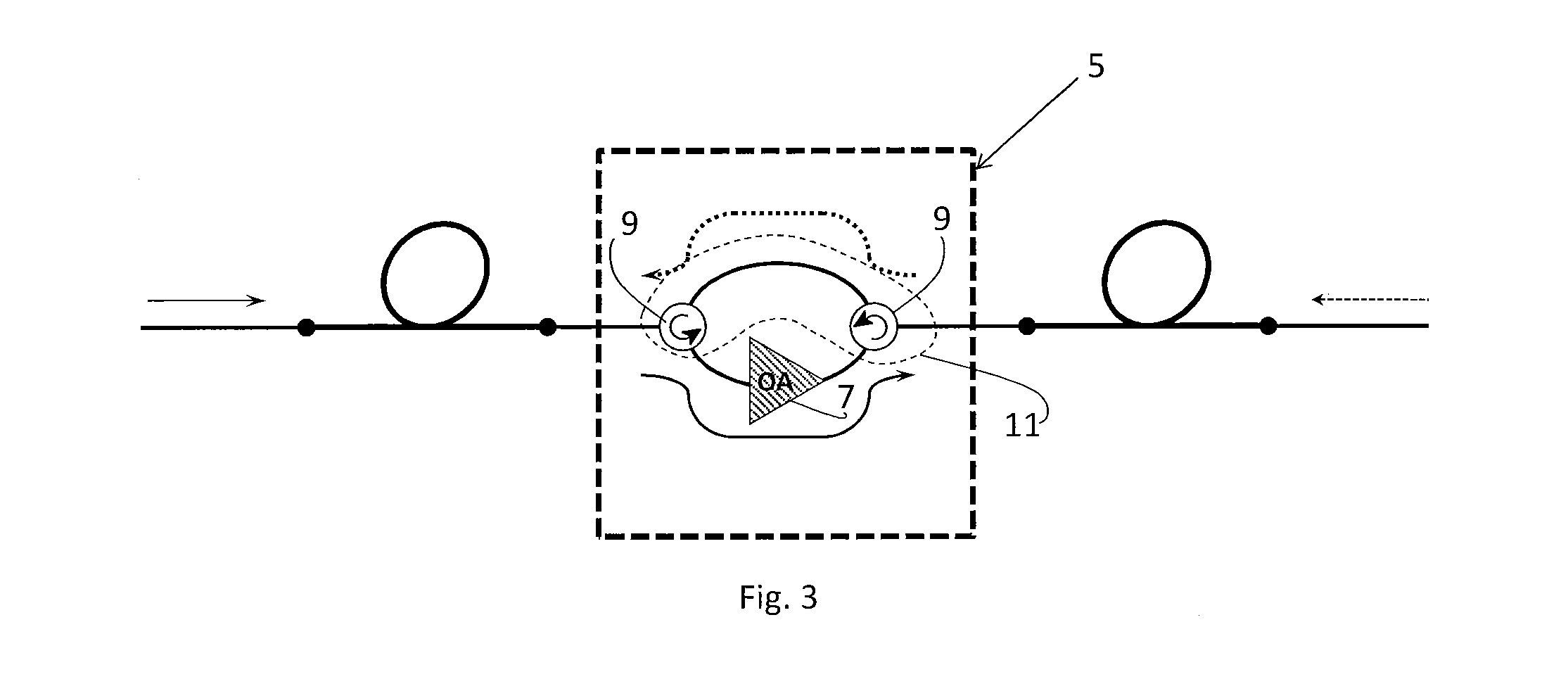Sensor and method of sensing
a sensing and sensor technology, applied in the direction of fibre optic/optical waveguide device testing, reflectometer using simulated back-scatter, structural/machine measurement, etc., can solve the problem of scattering-based sensing system suffering, limiting the maximal sensing range and measurement accuracy, and stimulating brillouin
- Summary
- Abstract
- Description
- Claims
- Application Information
AI Technical Summary
Benefits of technology
Problems solved by technology
Method used
Image
Examples
Embodiment Construction
[0101]FIG. 4 illustrates a sensor 20 according to one possible embodiment of the present invention. The sensor 20 is suitable for sensing one or more properties of one or more structures; in the particular example the sensor 20 is used for sensing the temperature and strain of a first and second pipe 21,37.
[0102]The sensor 20 comprises a first optical propagation path 23 which is defined by a first optical fiber 24. The first optical fiber 24 is secured to a surface 25 of the first pipe 21 to ensure that changes in the temperature and strain of the first pipe 21 will influence the propagation properties of the first optical fiber 24. A second optical propagation path 26 which is defined by a second optical fiber 29, is further provided. The second optical fiber 26 secured to a surface 28 of the second pipe 37 to ensure that changes in the temperature and strain of the second pipe 37 will influence the propagation properties of the second optical fiber 24.
[0103]The sensor 20 further ...
PUM
| Property | Measurement | Unit |
|---|---|---|
| Brillouin frequency shift | aaaaa | aaaaa |
| optical propagation path | aaaaa | aaaaa |
| optical | aaaaa | aaaaa |
Abstract
Description
Claims
Application Information
 Login to View More
Login to View More - R&D
- Intellectual Property
- Life Sciences
- Materials
- Tech Scout
- Unparalleled Data Quality
- Higher Quality Content
- 60% Fewer Hallucinations
Browse by: Latest US Patents, China's latest patents, Technical Efficacy Thesaurus, Application Domain, Technology Topic, Popular Technical Reports.
© 2025 PatSnap. All rights reserved.Legal|Privacy policy|Modern Slavery Act Transparency Statement|Sitemap|About US| Contact US: help@patsnap.com



